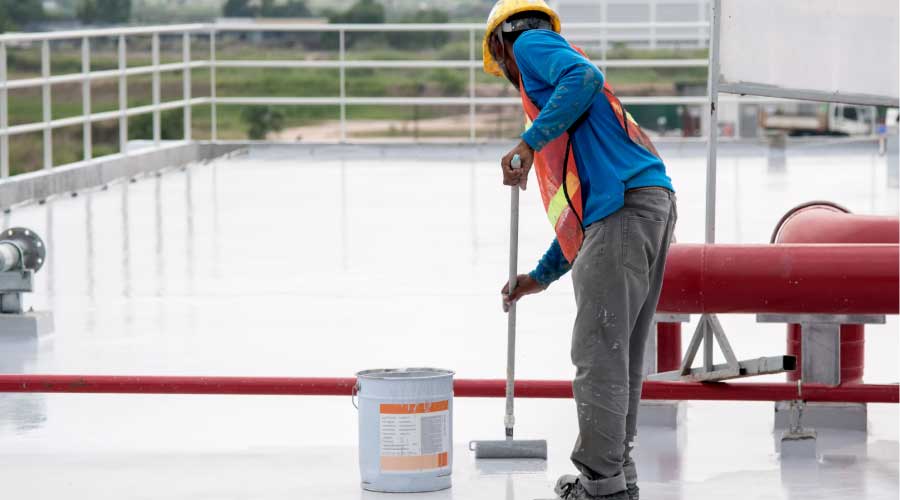Whether you’re living in a cosy city apartment or a sprawling suburban home, everyone loves a balcony. It’s a multi-purpose space, ideal for a peaceful morning coffee, a sun-lit reading corner, or a lively barbecue gathering. But with every seasonal downpour or spilled drink, your beloved balcony wears down. So, how can we transform our open-air oasis into a waterproof wonder? And what innovative materials and techniques are out there to ensure durability and longevity? In this blog, we journey through the various methods, materials, and the pros and cons of waterproofing solutions for your balcony.
Often overlooked, a correctly waterproofed outdoor area can significantly reduce potential water damage in areas of your home. Beyond this, it also enhances the lifespan of your structures and creates a healthier environment. Today, with the innovative waterproofing materials and methods available, you can not only stave off structural damage but also turn your balcony into a weather-proof retreat that emanates style and comfort, no matter the season.
Dive into the world of balcony waterproofing with us, as we unpack the nuances of waterproofing membranes, liquid-based solutions, and cementitious methods. Let’s bridge the gap between functionality and aesthetics!
Why Waterproofing Your Balcony Matters
Water might be a source of life, but when it comes to the structural integrity of our homes, it can wreak havoc. Leaks, wood rot, mold, peeling paint – the potential problems are numerous and capable of inflicting severe damage. Waterproofing your balcony isn’t just about protecting the area from the wrath of the weather gods. It plays a critical role in safeguarding the entirety of your home from potential structural mishaps that can cost a fortune to fix.
Often, the issues associated with inadequate waterproofing go unnoticed until they cause significant damage. The main problem lies beneath the visible layer, escalating unseen until reaching a costly crescendo. Waterproofing acts as an essential barrier, preventing water ingress and associated damages.
The most important aspect of balcony waterproofing is choosing the right materials and implementing them effectively. Understanding the options available to you and carefully selecting the right one for your specific needs is paramount.
Understanding Different Waterproofing Materials
The waterproofing materials market is vibrant and varied, offering a plethora of options to maintain the lifespan and look of your balcony. Among them, membranes and liquid coatings are typically the most popular solutions. These materials usually come in acrylic, latex, or silicone variants, each offering unique properties and degrees of protection.
Membranes are durable and flexible sheets glued or heat welded onto the surface, creating a waterproof barrier. They can be classified as either sheet-based or liquid-based. Sheet-based membranes are known for their strength and durability, while liquid-based membranes are popular for their ease of application and flexibility.
Liquid coatings, on the other hand, are seamless waterproofing solutions that create a powerful barrier against water ingress. They are typically applied with a roller or a spray, allowing for easy application and fewer chances for mistakes during installation.
Innovative Waterproofing Methods
Modern times drive modern solutions. Balcony waterproofing in melbourne is no exception, and the industry has seen several innovative methods surface in recent years. Consider cementitious waterproofing. It often comes as a malleable, cement-like mixture that can be applied to balconies of any size or shape.
Innovative nanotechnology coatings are another prime example, offering an exceptionally powerful waterproofing solution. They imbue your surfaces with a superhydrophobic coating that ruthlessly repels water.
Pros and Cons of Waterproofing
As with any home improvement project, waterproofing your balcony comes with its own set of benefits and drawbacks. On the plus side, waterproofing enhances the structural integrity of your home, minimizes repair costs in the long run, and raises property value.
On the downside, the process is time-consuming and can be expensive, depending on the chosen materials and methods. Inadequate or poorly executed waterproofing can also lead to more significant structural issues over time.
Cost of Waterproofing Your Balcony
The cost of waterproofing your balcony can vary significantly, depending on a variety of factors, such as the size of the area, existing state of the balcony, type of material used, and whether you hire professional help. It is vital to consider these aspects carefully before initiating the process.
Conclusion
Waterproofing a balcony is not a superficial venture; it’s a critical process to preserve and protect your home’s structural integrity. While it may seem like an expensive and complex task, with the right knowledge and choice of materials, it can be a worthwhile investment, enhancing your home’s overall aesthetics and durability.
In this blog, we’ve shed light on why waterproofing is essential, the materials available, innovative methods, and of course, the pros and cons of the process. We’ve highlighted the balance between functionality and aesthetics, reminding our readers that a well-waterproofed balcony can serve as a stylish outdoor retreat, rain or shine.
Whether you choose a traditional membrane, a modern nanotech coating, or a cementitious application, remember it’s about more than standing up to the elements – it’s about creating a home that’s strong, secure, and stylish. We hope this guide illuminates your path to a stunning, waterproof balcony space. Happy waterproofing!

